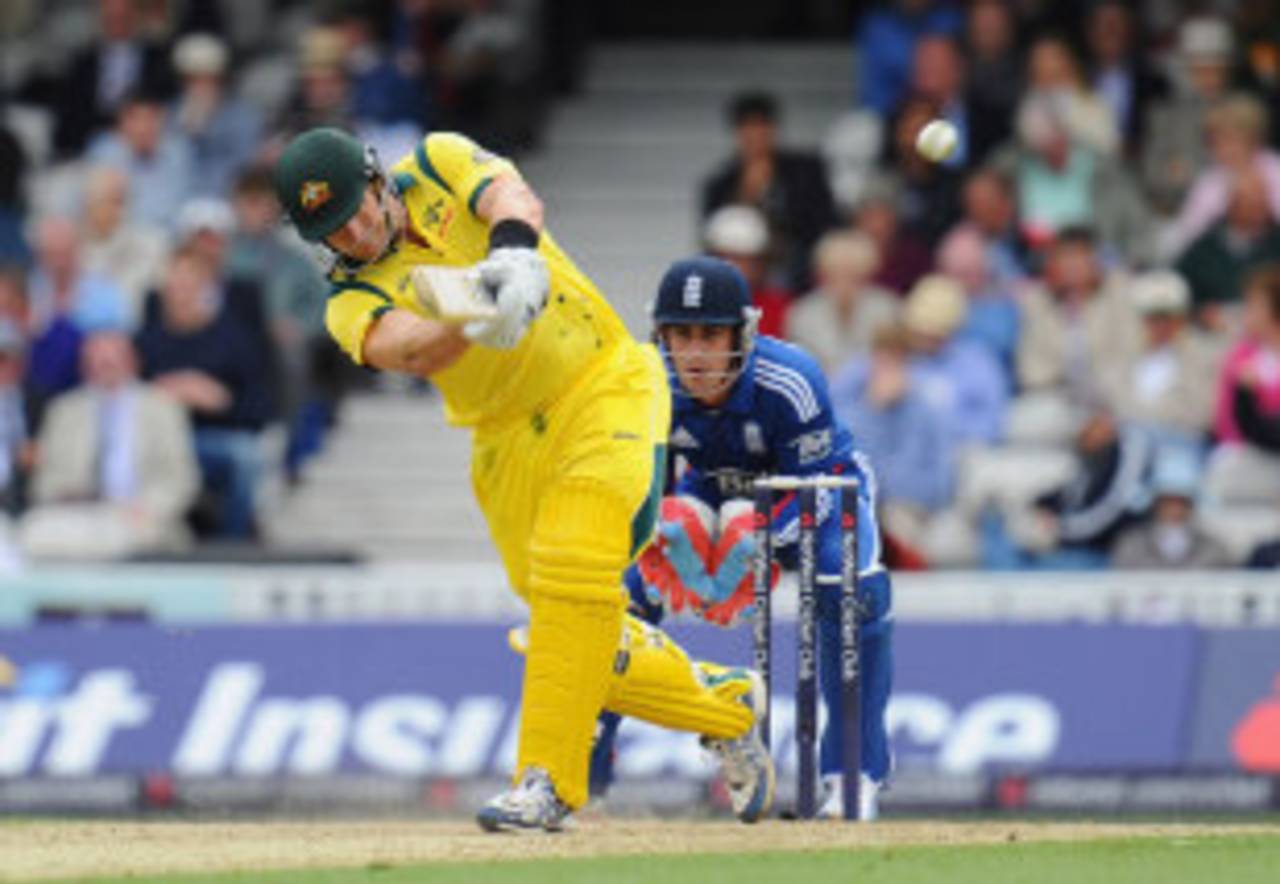When asked by George Plimpton which Olympic sport he would have tried his hand at, former US president Bill Clinton offered the decathlon. "It was because," Plimpton said, "You had ten disciplines that you could concentrate on ... And it's quite evident that he has the ability to do it, too. This is a man who is able to stand and give a speech and not have you-know-who popping up in the back of his head." The you-know-who Plimpton spoke of was, of course, Monica Lewinsky.
Clinton was considered a master of compartmentalisation, a popular term among psychologists and cricketers. The ability to momentarily forget all the other various tasks, issues and worries to concentrate most clearly on the one immediately at hand is an attribute sought by many in the game, not all with the same success. Captains must divorce their leadership from their batting or bowling, allrounders one discipline from the other. All players must forget their batting or bowling when they stand in the field. At The Oval, Australia's pursuit of a truly testing total for England was undermined by
Shane Watson allowing his batting to become clouded. Not for the first time.
Australia's innings began at a healthy clip, and continued to run smoothly despite the loss of David Warner and Peter Forrest. This was because Watson made a fast start, and kept pinging boundaries to keep the run-rate up and prevent the field or the bowlers from closing in completely. At the end of 20 overs, the visitors were 100 for 2, with Watson 53 from 52 balls - all set to go on to a match-shaping tally.
But from there, his innings petered out. The loss of his captain Michael Clarke did not help, but Watson failed to find gaps for boundaries, or singles, and was becalmed in the company of George Bailey, who battled to get established at the crease with no outlet for the pressure England began to impose. The stagnation of the Australia innings meant that by the time Watson was dismissed for 66, having taken another 28 balls for those 13 runs, the tally had advanced just 28 runs in 11 overs, leaving far too much ground for the middle order to catch up.
Watson's final act was a frustrated heave at Graeme Swann, held in the deep by Steven Finn, a moment that felt inevitable in the context of an innings now mired in mid-overs mud. It was indicative also, of a wider theme in Watson's game. He has admitted before that when batting first, he starts to worry about the physical toll of batting given the bowling he may have to do later, and that these thoughts inhibit his ability to keep up his earlier momentum. Only once has he made a century when batting first in an ODI. When chasing he has coshed five.
"Batting first you tend to be out in the heat and I know I might have to bowl ten overs, so it's physically more demanding"
Shane Watson
"I know in my mind that that is the case," Watson said last year of his greater comfort batting second. "One, it does take a bit of pressure off, I suppose, to know the exact score you've got to chase ... But alongside that, as well, batting first you tend to be out in the heat, and I know I might have to bowl ten overs. So it's also physically more demanding batting first, for me anyway, so that's always in the back of my mind as well."
As demonstrated by that admission, Watson is an admirably frank and transparent character. As an allrounder, he is perennially conflicted. His role in the Australia side has changed too many times to count, batting anywhere from No. 1 to No. 7, and his bowling running the gamut from taking the new ball to not using it at all. A history of injuries has forced Watson to think very carefully about his body and the limits of its exertion - he is a rare cricketer to travel the world with his own personal physio.
This background has made Watson into a most versatile cricketer and a critical part of Michael Clarke's team. But it has also served to entrench patterns into his cricket as well as his preparation for it. Watson worries about his workload every match he plays, and it has long seeped into the way he performs. Ten years into his ODI career, Watson is a far more accomplished batsman when the team bats second, his bowling duties out of the way.
The disparity between between first innings and second innings is so vast as to be worth noting by Clarke, as well as Australia's coach, Mickey Arthur. Across 83 innings batting first, Watson averages a mediocre 32.97, with the aforementioned one century and 16 half-centuries. But when batting second his mean shoots up to 57.10 across 50 innings, five times reaching 100, with 12 half-centuries. Moreover, his strike-rate improves.
For Australia to get the most out of Watson, and to salvage something from an ODI series against England that is now slipping well away from their grasp, they need to find a way of closing that gap. It is difficult to tell whether doing so requires the input of a psychologist, a physio or even a former US president, but Australia's standing as the top-ranked 50-over team in the world will remain at risk so long as the performances of their most destructive player can oscillate so wildly.
Daniel Brettig is an assistant editor at ESPNcricinfo. He tweets here
